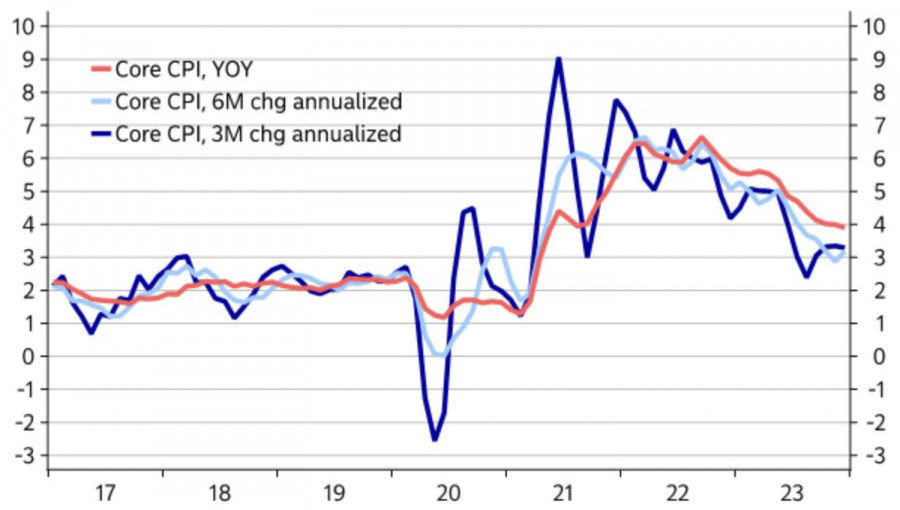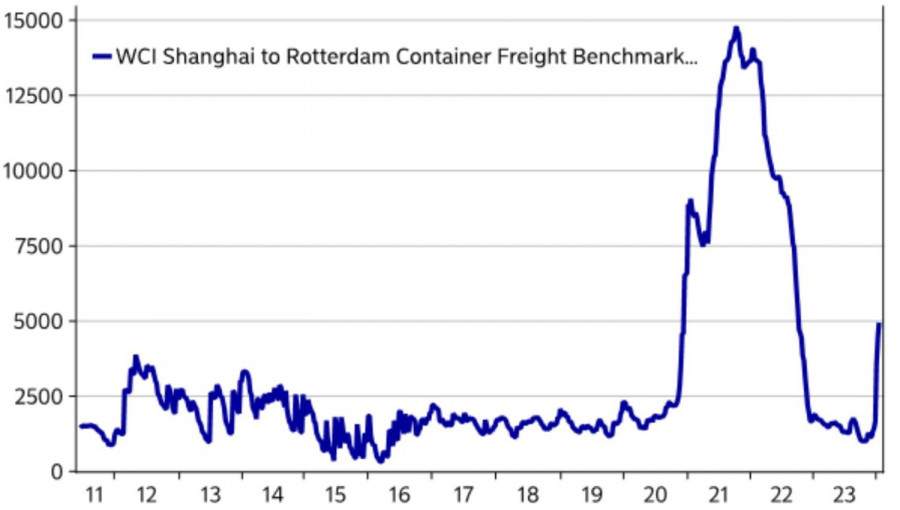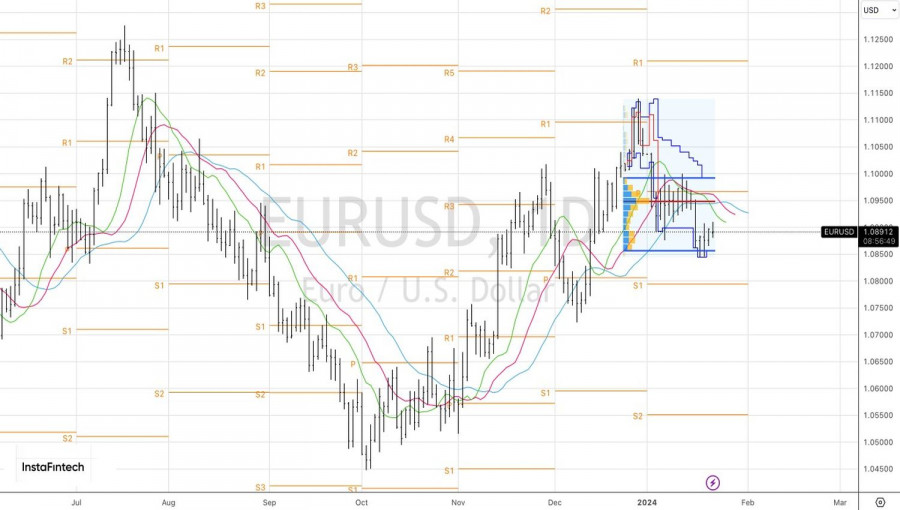Investors love patterns. Technical analysts study charts for recurring patterns. Proponents of fundamental market research compare the current Federal Reserve monetary policy cycle with previous ones. They know well that, on average, it takes six months from the last increase in the federal funds rate to its first decrease. Alas, not this time. In 2024, the easing of monetary policy will have to wait longer than usual. And this circumstance allows EUR/USD bears to look optimistically into the future.
When the Federal Reserve made a dovish pivot at the end of 2023, it was guided by a dual mandate. The central bank must bring inflation to 2% while simultaneously avoiding a sharp rise in unemployment. Consumer prices were indeed rapidly falling. History has shown that when unemployment starts to rise, it does so very quickly.
Dynamics of U.S. Inflation

It's no surprise that the Fed showed three acts of monetary expansion in its forecasts. The market immediately increased this figure to six, and the future of the U.S. dollar immediately began to look bleak. But that was not the case. The U.S. dollar had the best start since 2011, thanks to the understanding that the markets had gotten ahead of themselves.
Indeed, such a significant easing of monetary policy as reducing the federal funds rate from 5.5% to 4% requires a substantial weakening of the economy. Most likely, a recession that few are forecasting now. 91% of respondents in a survey conducted by the National Association for Business Economics believe that there will be no downturn in the next 12 months. However, instead of deteriorating, macro statistics for the U.S. have improved since the beginning of the year.
Now, for the Fed to lower borrowing costs in March, there will need to be a very serious slowdown in inflation in January and February, which currently seems unlikely. It's no wonder that the chances of the first month of spring starting monetary expansion have dropped from 80% at the beginning of 2024 to 44%.
Most likely, the Federal Reserve will wait until June, but if the cost of freight continues to rise due to the escalation of conflict in the Middle East, such as Houthi attacks on ships in the Red Sea, inflation in the USA will also increase. Remember, the main reason for its increase in 2021–2022 was supply disruptions due to the pandemic and armed conflict in Ukraine. Now, the global economy is once again facing supply shocks.
Dynamics of the Freight Cost Index


If geopolitics continues to deliver unpleasant surprises, the Fed may not lower the federal funds rate at all in 2024. As a result, the U.S. dollar will transform from an outsider, as it was classified at the end of 2023, into the main favorite on Forex.
Technically, on the daily chart, EUR/USD is retesting the lower boundary of the consolidation range of 1.091–1.099 within the framework of the "Spike and Ledge" pattern. If the bulls fail to return the quotes to this trading channel, the pair should be sold towards at least 1.08. Conversely, a rise in the euro above $1.0945 is a reason for purchases.
The material has been provided by InstaForex Company - www.instaforex.comfrom Forex analysis review https://ift.tt/2j7S5Y3
via IFTTT
